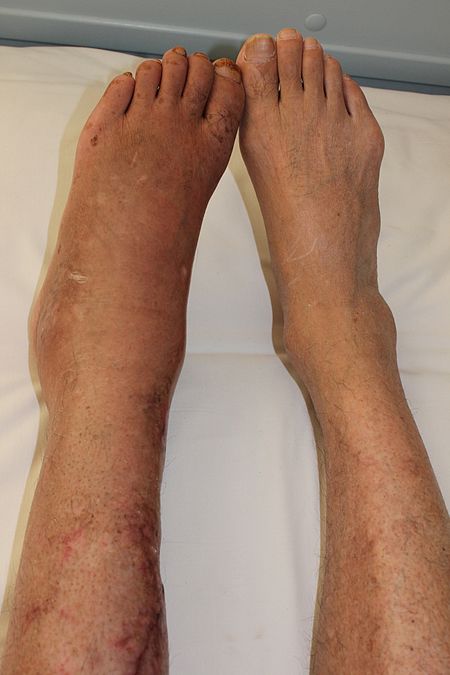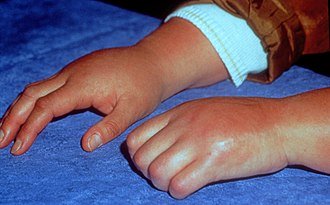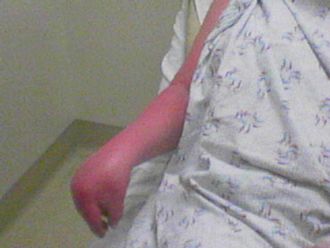nalco group
bone, muscle & joint pain physio
BOOK NOW / WHATSAPP ABOUT YOUR PAIN OR INJURY
- ORCHARD 400 Orchard Road #12-12 Singapore 238875
- TAMPINES 9 Tampines Grande #01-20 Singapore 528735
- SERANGOON 265 Serangoon Central Drive #04-269 Singapore 550265
Home > Blog > Physiotherapy & Hand Therapy > Conditions > Complex Regional Pain Syndrome (CRPS) and Physiotherapy
Complex Regional Pain Syndrome (CRPS) and Physiotherapy

Complex regional pain syndrome (CRPS), also known as reflex sympathetic dystrophy (RSD) or algodystrophy, is a disorder of a portion of the body, usually the arms or legs, which manifests as pain, swelling, limited range of motion, and changes to the skin and bones.
It may initially affect one limb and then spread throughout the body; 35% of affected people report symptoms throughout their whole bodies.
There are multiple names for this disease, as well as two subtypes.
- Type I (also called reflex sympathetic dystrophy) refers to CRPS without
evidence of a specific peripheral nerve injury.
- Type II refers to when there is specific evidence of a nerve injury.
The cause of CRPS is unknown.
This typically occurs after an injury to the area in question such as a fracture or after surgery. It is proposed that inflammation and alteration of pain perception in the central nervous system play important roles.
It has been suggested that persistent pain and the perception of non-painful stimuli as painful may be caused by inflammatory molecules (IL-1, IL2, TNF-alpha) and neuropeptides (substance P) released from peripheral nerves.
This release may be caused by inappropriate cross talk between sensory and motor fibers at the affected site. CRPS is not believed to be caused by psychological factors, yet pain can cause psychological problems, such as depression.
There is often impaired social and occupational function.
Treatment involves a multidisciplinary approach involving medications, physical and occupational therapy, psychological treatments, and neuromodulation.
Despite this, the results are often unsatisfactory, especially if treatment is delayed.

Complex Regional Pain Syndrome (CRPS) signs and symptoms
Clinical features of CRPS have been found to be inflammation resulting from the release of certain pro-inflammatory chemical signals from the nerves, sensitized nerve receptors that send pain signals to the brain, dysfunction of the local blood vessels' ability to constrict and dilate appropriately, and maladaptive neuroplasticity.
The signs and symptoms of CRPS usually initially manifest near the site of a (typically minor) injury. The most common symptoms are pain sensations, including burning, stabbing, grinding, and throbbing.
Moving or touching the limb is often intolerable.
The patient may also experience
- muscle spasms;
- local swelling;
- extreme sensitivity to things
such as wind and water,
- touch and vibrations;
- abnormally increased
sweating; changes in skin temperature (usually hot but sometimes cold)
and
- color (bright red or a reddish violet);
- softening and thinning of bones;
- joint tenderness or stiffness;
- changes in nail and hair growth and/or
- restricted or painful movement
Drop attacks (falls), almost fainting, and fainting spells are infrequently reported, as are visual problems. The symptoms of CRPS vary in severity and duration. Since CRPS is a systemic problem, potentially any organ can be affected.
The pain of CRPS is continuous although varies in severity. It is widely recognized that it can be heightened by emotional or physical stress.
Previously it was considered that CRPS had three stages; it is now believed that people affected by CRPS do not progress through these stages sequentially.
These stages may not be time-constrained and could possibly be event-related, such as ground-level falls or re-injuries of previously damaged areas.
Thus, rather than a progression of CRPS from bad to worse, it is now thought, instead, that such individuals are likely to have one of the three following types of disease progression:
- "Stage" one is characterized by severe, burning pain at the site
of the injury, muscle spasms, joint stiffness, restricted mobility,
rapid hair and nail growth, and vasospasm.
The vasospasm is that which causes the changes in the color and
temperature of the skin.
Some may experience hyperhydrosis (increased sweating). In mild cases this stage lasts a few weeks, in which it can subside spontaneously or respond rapidly to treatment (physical therapy, pain specialist). - "Stage" two is characterized by more intense pain. Swelling spreads,
hair growth diminishes, nails become cracked, brittle, grooved and
spotty, osteoporosis becomes severe and diffuse, joints thicken, and muscles atrophy.
- "Stage" three is characterized by irreversible changes in the skin
and bones, while the pain becomes unyielding and may involve the entire
limb.
There is marked muscle atrophy, severely limited mobility of the affected area, and flexor tendon contractions (contractions of the muscles and tendons that flex the joints).
Occasionally the limb is displaced from its normal position, and marked bone softening and thinning is more dispersed.

CRPS visible on hands and wrists
causes
Investigators estimate that 2–5% of those with peripheral nerve injury, and 13-70 percent of those with hemiplegia (paralysis of one side of the body), will develop CRPS.
In addition, some studies have indicated that cigarette smoking was strikingly present in patients and is statistically linked to RSD.
This may be involved in its pathology by enhancing sympathetic activity, vasoconstriction, or by some other unknown neurotransmitter-related mechanism.
This hypothesis was based on a retrospective analysis of 53 patients with RSD, which showed that 68% of patients and only 37% of controls were smokers.
The results are preliminary and are limited by their retrospective nature. 7% of people who have CRPS in one limb later develop it in another limb.
Treatment
Treatment of CRPS often involves a number of modalities.
Therapy
Physical and occupational therapy have low quality evidence to support their use.
Physical therapy interventions may include transcutaneous electrical nerve stimulation, progressive weight bearing, graded tactile desensitization, massage, and contrast bath therapy.
Mirror box therapy
Mirror box therapy uses a mirror box, or a stand-alone mirror, to create a reflection of the normal limb such that the patient thinks they are looking at the affected limb.
Movement of this reflected normal limb is then performed so that it looks to the patient as though they are performing movement with the affected limb (although it will be pain free due to the fact it is a normal limb being reflected).
Mirror box therapy appears to be beneficial in early CRPS. However, Lorimer Moseley (University of South Australia) has cautioned that the beneficial effects of mirror therapy for CRPS are still unproven.
Graded motor imagery
Graded motor imagery appears to be useful for people with CRPS-1.
Graded motor imagery is a sequential process that consists of (a) laterality reconstruction, (b) motor imagery, and (c) mirror therapy.
Medications
Tentative evidence supports the use of bisphosphonates, calcitonin, and ketamine. Doing nerve blocks with guanethidine appears to be harmful.
Evidence for sympathetic nerve blocks generally is insufficient to support their use. Intramuscular botulinum injections may benefit people with symptoms localized to one extremity.
Ketamine
Ketamine, a dissociative anesthetic, appears promising as a treatment for complex regional pain syndrome.
It may be used in low doses if other treatments have not worked. No benefit on either function or depression, however, has been seen.
Bisphosphonate treatment
As of 2013 low quality evidence supports the use of bisphosphonates.
A 2009 review found "very limited data reviewed showed that bisphosphonates have the potential to reduce pain associated with bone loss in patients with CRPS I, however, at present there is not sufficient evidence to recommend their use in practice".
Surgery
Spinal cord stimulators
Spinal cord stimulator appears to be an effective therapy in the management of patients with CRPS type I (Level A evidence) and type II (Level D evidence).
While they improve pain and quality of life evidence is unclear regarding effects on mental health and general functioning.
Sympathectomy
Surgical, chemical, or radiofrequency sympathectomy — interruption of the affected portion of the sympathetic nervous system — can be used as a last resort in patients with impending tissue loss, edema, recurrent infection, or ischemic necrosis.
However, there is little evidence that these permanent interventions alter the pain symptoms of the affected patients, and in addition to the normal risks of surgery, such as bleeding and infection, sympathectomy has several specific risks, such as adverse changes in how nerves function.
Amputation
There is no randomized study in medical literature that has studied the response with amputation of patients who have failed the above-mentioned therapies and who continue to be miserable.
Nonetheless, there are reports that on average cite about half of the patients will have resolution of their pain, while half will develop phantom limb pain and/or pain at the amputation site.
It is likely that as in any other chronic pain syndrome, the brain becomes chronically stimulated with pain, and late amputation may not work as well as it might be expected.
In a survey of fifteen patients with CRPS Type 1, eleven responded that their life was better after amputation. Since this is the ultimate treatment of a painful extremity, it should be left as a last resort.

Severe CRPS of right arm
Prognosis
Good progress can be made in treating CRPS if treatment is begun early, ideally within three months of the first symptoms.
If treatment is delayed, however, the disorder can quickly spread to the entire limb, and changes in bone, nerve, and muscle may become irreversible.
The prognosis is not always good.
Johns Hopkins Hospital reports that 77% of sufferers have spreads from the original site or flares in other parts of the body.
The limb, or limbs, can experience muscle atrophy, loss of use, and functionally useless parameters that require amputation.
RSD/CRPS will not "burn itself out", but if treated early, it is likely to go into remission.
Once one is diagnosed with Complex Regional Pain Syndrome, the likelihood of it resurfacing after going into remission is significant.
It is important to take precautions and seek immediate treatment upon any injury.
